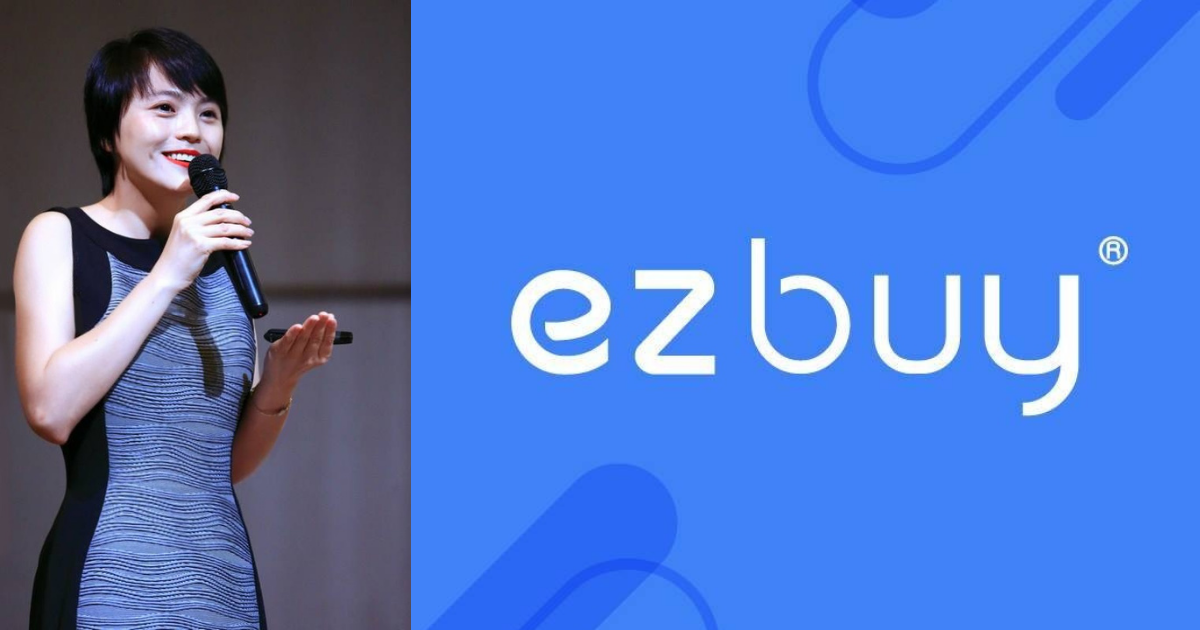Before the rise of Shopee, Lazada, and Qoo10, most Singaporeans were shopping on Taobao.
However, shopping on Taobao was cumbersome. That was until Ezbuy, formerly 65daigou, came along and solved all of Singaporeans’ logistics issues.
Founded in 2010, Ezbuy is dubbed as Singapore’s largest global online shopping platform and leader in cross-border e-commerce in Southeast Asia.
It connects consumers to top brands and sellers from China, USA, Korea, Taiwan and local brands on popular shopping sites such as Taobao and Amazon via its Global Marketplace.
Helping consumers buy goods from Taobao

For the unacquainted, Taobao is a Chinese consumer-to-consumer (C2C) and business-to-consumer (B2C) e-commerce marketplace started in 2003 by the Alibaba Group.
It offers a platform for individuals and small business owners to sell their products online via their own “stores”. There is also a Marketplace for individual and small and medium businesses and Tmall (also Tmall Global) for medium to large businesses.
Taobao is often referred to as “the Amazon of China”, due to its huge volume of products available and sales made each day.
According to Statista, in the fiscal year ending March 31, 2020, the gross merchandise value (GMV) transacted on Taobao, reached approximately 3.39 trillion yuan (S$711 billion).
However, even though the perks of Taobao were huge back in the day, many Singaporeans faced challenges in purchasing from the site due to language barriers and other logistical issues.
Ezbuy thus stepped in to provide Singaporeans with a quick and easy method to purchase anything they needed from the Chinese e-commerce giant.
The model was simple and effective: customers would place orders using its Ezbuy’s website or app, and it would purchase from Taobao and ship the goods to the customer. In fact, many Singaporeans would remember heading to an Ezbuy collection station or collecting their Ezbuy parcels from a truck parked at their void decks.

For the service, customers had to pay an agent fee based on the total value of the products purchased and international shipping fee.
The rates ranged from four per cent to eight per cent, for different membership tiers. Occasionally, the brand would run promotions where the membership fee would be eliminated.
While Ezbuy was not the only player in the country, it was one of the first to adopt an English interface, widening the audience dramatically to the local population and driving its rapid growth.
Acquisition by LightInTheBox
According to Crunchbase data, Ezbuy raised US$20 million (S$27.12 million) in Series B funding. Two years later, it raised another US$17.6 million (S$23.87 million) in Series C funding.

Shortly after its Series C funding, US-listed Chinese online retailer LightInTheBox acquired Ezbuy for nearly US$86 million (S$116.63 million).
Founded in 2007, LightInTheBox sources products directly from China-based manufacturers and sells them to online buyers around the globe.
In a press release dated 8 November 2018 announcing the “definitive agreement to acquire” Ezbuy, LITB said, “Both companies will work together to maximize business synergies created to capitalise on opportunities to expand their businesses.”
Another condition for closing the acquisition included the appointment of ezbuy’s co-founder and CEO He Jian as LITB’s CEO.
In an interview with Vulcan Post in 2018, Wendy Liu, CEO of Ezbuy in Singapore, clarified that despite the acquisition, “both companies will operate separately” and there are no changes to the team and operations.
She confirmed that sellers and merchants on LITB will also be able to sell on ezbuy and that Singapore and Southeast Asian shoppers will be able to buy LITB products on ezbuy.
“ezbuy and LITB will share sellers resource. As a result of this arrangement, customers of ezbuy and LITB can enjoy more product varieties,” she added.
At that time, it also seemed that Ezbuy was not doing well, and its performance was falling.
Ezbuy’s gradual decline

According to a report by venture builder Momentum Works in 2018, Ezbuy saw quite a number of hires — from Alibaba and Rocket Internet — leave in a short amount of time
In 2017, Ezbuy founder He Jian engaged in a war of words with Alibaba’s founder and president Jack Ma, accusing the e-commerce giant of “bullying” behaviour after more than a thousand accounts on ezbuy were frozen.
Ezbuy had issued a letter on 8 December 2017 detailing how over 300 purchasing accounts, which were used to place orders on Taobao, faced technical restrictions that month.

In response, Alibaba Group issued a statement saying Ezbuy’s act of creating accounts to buy items from Taobao and reselling them was an act of scalping. This had led to the disruption of an estimated 30,000 orders.
However, prior to Ezbuy’s run-in with Taobao, its performance in the region was already declining. Regional online shopping comparison website iPrice’s figures show that in Quarter 3 of 2017, Ezbuy was ranked the third leading e-commerce player in Singapore with 2.3 million monthly visits, behind Qoo10 and Lazada.
Wendy also shared in an interview with Channel News Asia in 2018 that Ezbuy was not profitable after eight years of operation.
| Year | Ranking in Singapore | Monthly Web Visits |
| Q3 2017 | 3rd | 2.3 million |
| Q3 2018 | 4th | 1.7 million |
| Q3 2019 | 4th | 1.3 million |
| Q3 2020 | 5th | 1.5 million |
| Q1 2021 | 5th | 1.07 million |
In Q3 of 2018, it had fallen to fourth place in the country with 1.7 million monthly visits. In Q1 of 2021, Ezbuy was ranked fifth in Singapore with just 1.07 million monthly visits.
In comparison, Shopee had over 12 million monthly visits in Q1 2021, while Lazada and Amazon had seven million and six million respectively.
What caused Ezbuy’s problems?
Firstly, Ezbuy’s daigou business model is not as scalable as the marketplace model that e-commerce platforms like Shopee and Lazada use. Daigou is a form of surrogate shopping in China as a means to receive goods via third-party platforms such as Ezbuy.
While the model worked in the early days as the e-commerce scene in Singapore was nascent, the rise of competitors like Lazada and Shopee have eroded Ezbuy’s competitive edge.
Even though Taobao still presents itself as a cheaper alternative to Singaporeans, they can still get a huge variety of products on Shopee and Lazada for a similar cost.
The daigou model has also led to an over reliance on its ability to continuously buy directly from the platforms of Chinese marketplaces like Taobao. This proved extremely destructive when Taobao simply suspended the accounts of Ezbuy buyers.
An alternative could have been building its technological capacities such that it can have a platform which is completely independent of much marketplaces.
Next, a TechInAsia article published in 2018 highlights that Ezbuy did not do enough outside of Singapore, stating ” Ezbuy’s story is Southeast Asia. However, it never managed to expand outside Singapore.”
It is unclear how large Ezbuy’s target market is. In an interview with Vulcan Post prior to its acquisition, Wendy mentioned that Ezbuy had over three million customers. However, a quick search on the Ezbuy website shows that the number has remained unchanged.
Data from SimilarWeb also shows that 96.8 per cent of Ezbuy’s web visitors come from Singapore.
What’s next for Ezbuy?

Ultimately, Ezbuy still has a valuable Singaporean consumer base, that it can leverage upon if used properly. According to SimilarWeb, it still received 1.18 million visitors to its site in June 2021, of which 96.8 per cent came from Singapore.
It is thus still possible for Ezbuy to evolve its business model to capture sellers onto its platform as well.
It can also take a leaf out of Shopee and Lazada’s books. Both platforms have done well in engaging users on their sites. From catchy jingles to in-app entertainment to games, Shopee has employed many tactics to keep customers coming back.
The Covid-19 pandemic has revealed the opportunities that lie in Singapore’s e-commerce sector. As the e-commerce industry in Singapore continues to grow, Ezbuy can leverage upon up and coming trends to make a comeback, rather than fade into the shadows as a forgotten e-commerce site.
Featured Image Credit: Ezbuy








